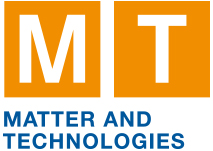Speaker
Description
For maintaining the designed optical performance of the Super-FRS, accurate knowledge of magnetic field quality and element alignment is crucial. Existing beam-based alignment methods can determine quadrupole axes but are experimentally extensive and not practical for routine use. Some cross-talk errors cannot be measured in advance, since, for example, three dipole magnets (or a dipole and a multiplet) cannot be measured together. Detector positioning uncertainties further complicate beam-based diagnostics. This PhD project aims to develop a beam-based framework to infer such error sources from operational beam data. As a first step, the influence of quadrupole misalignments on resolution will be studied. A physics-informed Gaussian Process model will be explored to combine beam optics knowledge with probabilistic regression, which can be readily extended to Bayesian optimization. This approach could lay the groundwork for uncertainty-aware model refinement and steps toward a data-driven digital twin of the Super-FRS.
| Speed talk: | I am unwilling/unable to present a speed talk |
|---|

